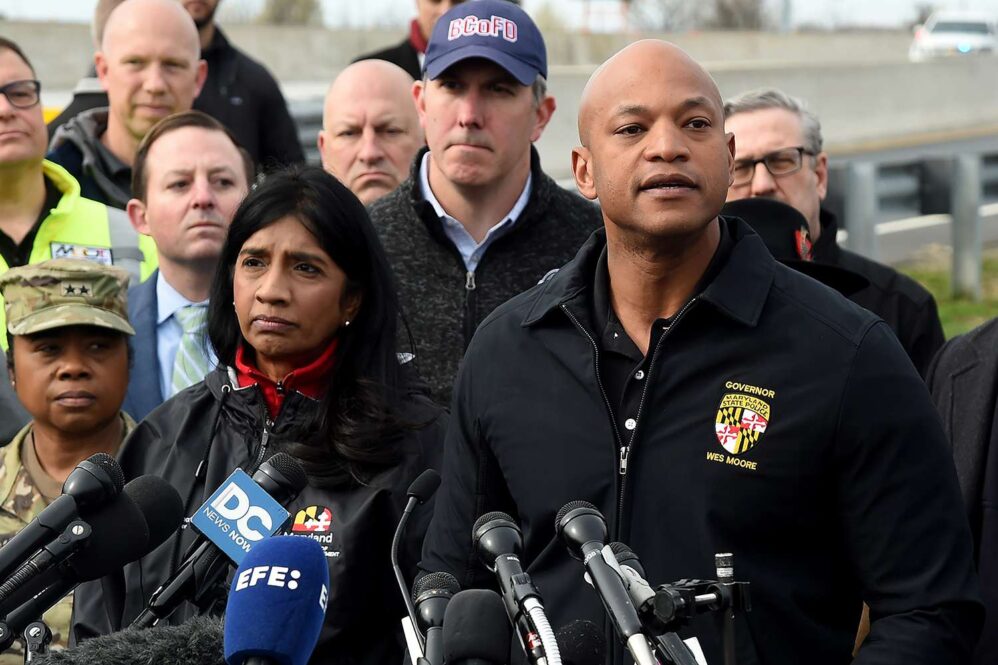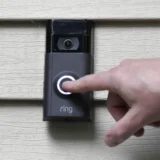BALTIMORE BANNER: The day after the bodies of two victims were recovered from the Francis Scott Key Bridge collapse, the focus at the site of the wreckage turned from recovery to salvage.
“This is not a conclusion,” Gov. Wes Moore said Wednesday. “It’s a continuation. We take this phase just as seriously, just as personally as we took the last phase.”
Col. Roland Butler, superintendent of the state police, said that at about 10 a.m. Wednesday, divers located a red pickup truck in about 25 feet of water containing the bodies of two of the missing construction workers, whom authorities identified as Alejandro Hernandez Fuentes, 35, and from Veracruz in Mexico, and Dorlian Ronial Castillo Cabrera, 26, who is from San Luis in Guatemala. Family members were notified later that day.
Fuentes and Cabrera were members of the construction crew filling potholes on the bridge when the 984-foot cargo ship Dali, apparently without power and the ability to steer, struck a bridge footing, causing it to collapse in seconds. Four more workers remain missing and are presumed dead.
”We’re now moving from a recovery mode to a salvage operation,” Butler said at a press conference early Wednesday evening, explaining divers can no longer safely search through the debris. ”We have exhausted all search efforts in the areas around this wreckage,” Butler said. “And based on sonar scans, we firmly believe that the vehicles are encased in superstructure and concrete that we tragically saw come down.”
Later that night, the National Transportation Safety Board provided new insightinto why the Francis Scott Key Bridge fell so quickly after being struck by the ship.
It was a “fracture critical bridge,” meaning if one portion sustained enough damage, the entire structure would collapse, said Jennifer Homendy, chair of the NTSB. Of the roughly 615,000 bridges in the country, about 17,000, or less than 3%, are fracture critical, Homendy said.
“The preferred method for building bridges today is that there is redundancy built in,” she said. “This bridge did not have redundancy.”
The NTSB obtained the ship’s voyage data recorder Tuesday and sent it to a lab, which will examine it for clues as to why it went adrift as it departed the Port of Baltimore. Similar to an airplane’s flight data recorder or “black box,” the voyage data recorder logs key information about a ship, like audio from the bridge, radio transmissions and engine or rudder performance.
Investigators are also requesting records from myriad state and federal agencies. Homendy said a preliminary report would be issued in two to four weeks.
NTSB investigator Marcel Muise did confirm the Dali lost power before striking the Key Bridge, but officials have not given a reason why. The ship’s pilot, a local, tried to summon nearby tugboats and dropped anchor as a means to prevent striking the bridge, but his maneuvers were ineffective, Muise said. He confirmed the pilot warned Maryland Transportation Authority officials about the ship’s status, allowing MDTA officers to close the bridge to vehicle traffic before the Dali hit it.
Meanwhile, Moore said Wednesday that he submitted a request to the White House for emergency relief funds “to assist in all the work going forward,” he said.
”I do not know at this point what the total costs are going to be,” Moore said at the same press conference attended by Butler, Mayor Brandon Scott, Sens. Ben Cardin and Chris Van Hollen, and Tom Perez, senior advisor to President Joe Biden. Both Moore and Perez delivered part of their comments in Spanish. All six victims of the collapse were immigrants from Central America.
“I do not yet know what the full timeline is going to be,” Moore said. “But the thing that I do know is that the task in front of us, it will be real. It will be daunting…but I can tell you right now, our resolve is unshakeable. We will get to completion and we will do it together. This work will take time, but we’re going to make sure that we are going to leave no one behind. We are going to take care of our people.”
Butler indicated that for more remains to be recovered from the Patapsco River, concrete and steel debris would first have to be removed so that divers can safely work in the area again. Coast Guard confirmed that barges and cranes were enroute to aid in the salvage effort, although no time was given for the equipment’s arrival.










